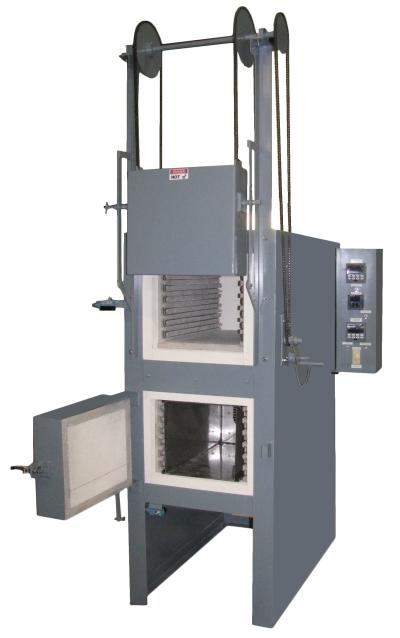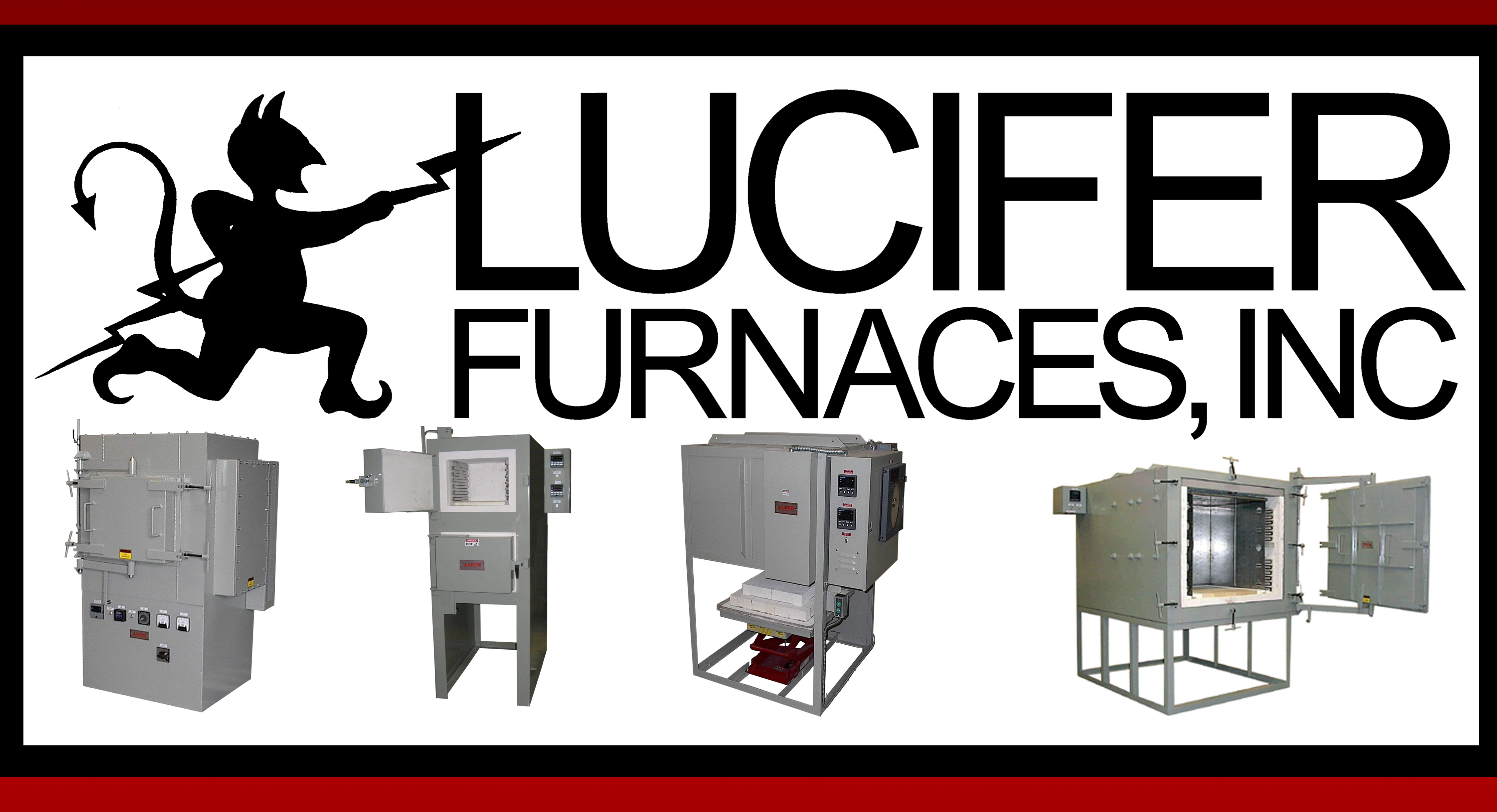
Lucifer Furnaces says it originated the dual-chamber furnace design and perfected it with its 8000 Space Saver series. From high-temperature hardening to convection tempering, the dual-chamber design delivers a full range of heat treating capability in a rugged, compact unit that will maximize the productivity and efficiency of any toolroom.
The 8000 series features an air atmosphere high-temperature upper chamber on top of an air recirulating oven, both with easily removable coiled wire heating elements in cast holders. A manual vertical lift door for the upper chamber keeps the hot face away from the operator at all times and the lower chamber is complete with a fan assembly, consisting of a stainless steel liner with recirculating fan, to provide uniform heat at low temperatures. Both chambers have the exact same work area dimensions and each is controlled by single set point digital Honeywell controller.
With chamber sizes ranging from 6" H x 6" W x 6" L up to 24" H x 36" W x 72" L; Robert Hauser, sales manager at Lucifer Furnaces, says that the base design 8000 Space Saver furnace provides the ideal platform for customization to satisfy every customer’s unique heat treating needs. The 8000 series includes models that can be used with a protective atmosphere (AM or GT Models), models that feature silicon-carbide heating elements for high temperatures up to 2750° F (EHS and HS Models) as well as lower chamber temperature ratings up to 1600° F. Lucifer Furnaces will also design chambers to meet AMS2750E specifications for temperature uniformity.
Contact Details
Related Glossary Terms
- hardening
hardening
Process of increasing the surface hardness of a part. It is accomplished by heating a piece of steel to a temperature within or above its critical range and then cooling (or quenching) it rapidly. In any heat-treatment operation, the rate of heating is important. Heat flows from the exterior to the interior of steel at a definite rate. If the steel is heated too quickly, the outside becomes hotter than the inside and the desired uniform structure cannot be obtained. If a piece is irregular in shape, a slow heating rate is essential to prevent warping and cracking. The heavier the section, the longer the heating time must be to achieve uniform results. Even after the correct temperature has been reached, the piece should be held at the temperature for a sufficient period of time to permit its thickest section to attain a uniform temperature. See workhardening.
- tempering
tempering
1. In heat-treatment, reheating hardened steel or hardened cast iron to a given temperature below the eutectoid temperature to decrease hardness and increase toughness. The process also is sometimes applied to normalized steel. 2. In nonferrous alloys and in some ferrous alloys (steels that cannot be hardened by heat-treatment), the hardness and strength produced by mechanical or thermal treatment, or both, and characterized by a certain structure, mechanical properties or reduction in area during cold working.

